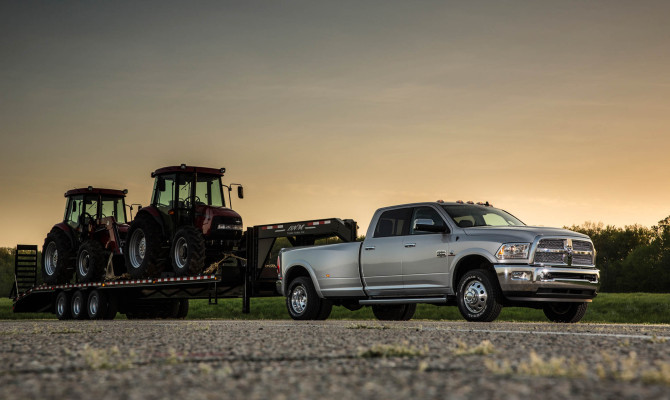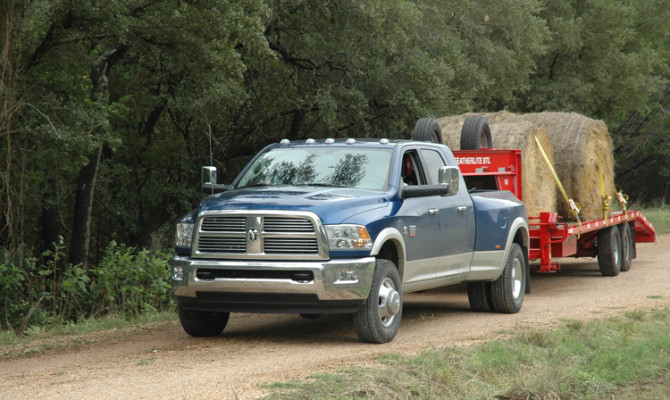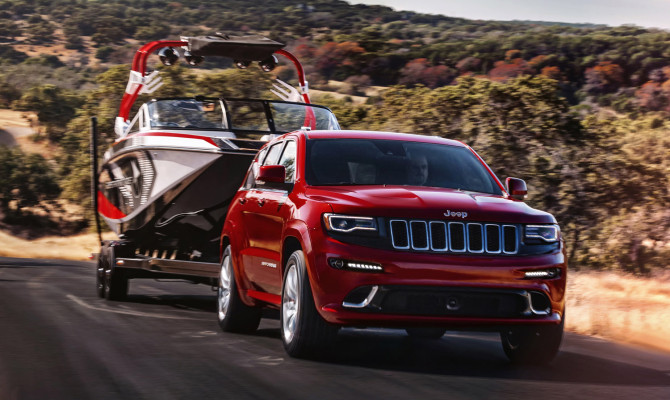Trailer sway can be a scary experience, especially if it is a large trailer. If this happens, do not panic…
Towing a trailer for the first time can be stressful and backing up can bring out words you didn’t know you had in your vocabulary.
For the beginner, the best thing to do to develop your skills is go to a large, empty parking lot and practice.
The key fact to bear in mind before you start is that the trailer will move in the opposite direction of steering input when backing. Many people find it easier to position their hand at the bottom of the steering wheel; the trailer will go towards the same direction the hand travels. Do not rely on your mirrors, turn around and look at the trailer. When there is any chance of damage, use a spotter who can tell you to stop before damage occurs.
Remember, it will get easier with practice. Honest.
The way you load the trailer can determine how easy you can tow it. While loading, keep in mind that the tongue weight should be 10 per cent to 15 per cent of the overall trailer weight. One of the main causes of trailer sway is not having a large enough percentage of trailer tongue weight compared to gross trailer weight. To help prevent the trailer from swaying back and forth, a few things can be done. Try placing heavier cargo in the front of the trailer, ahead of the trailer’s axle. Also center the cargo left to right and use tie downs to keep the load from sliding. Trailer Sway can also lead to a loss of vehicle control.
When starting out with a new load on a trailer, make sure it will not sway by gradually increasing your speed in intervals until highway speed is reached. If the trailer does begin to sway, try adjusting the cargo and equipment accordingly and then repeat the test. If repositioning the load and equipment did not help reduce the sway, a sway control or a weight distribution system with sway control may be needed.
Trailer sway can be a scary experience, especially if it is a large trailer. If this happens, do not panic. Take your foot off the accelerator and coast to a slower speed; avoid sudden movements of the steering wheel. Apply the brakes slowly when you are down to a safe speed.
Check your hitch ball, coupler, and safety chains every time you tow. Many people with long trailer experience use a checklist to be sure all equipment is hooked up and in good condition. Damage can happen quickly when something goes wrong. For example, safety chains wear through very quickly if they are in contact with the pavement.
Never allow anyone in or on your trailer while it is being towed and speed limits for trailers are generally lower than for other vehicles. Leave a little extra room between you and the vehicle in front of you. Even if you are using trailer brakes, you will not be able to stop nearly as fast as you can without a trailer.
A good general rule is to double the two-second rule, making sure you maintain at least a four-second gap between your vehicle and the vehicle in front of you. For heavier trailers, you will need to leave even more space.
The longer the trailer, the further you will have to drive straight into intersections before beginning your turns. Watch your mirrors carefully and go extra wide, at first, until you get used to it.
When approaching a hill, you will want to keep your speed consistent whether you are going up a hill or down. When descending, be extra careful not to overwork your brakes. Use a lower gear that will keep a consistent speed without constant use of the brakes. Pull off the road occasionally to let your brakes cool and to check your trailer brakes.
Stay focused on your driving and do not try to perform other tasks. Remember to check your rear view mirror frequently, relax and enjoy the drive.
Recent Comments
- { Enjoyed your Forest of Bowland in the BMW X5M, particularly the photo of the BMW in front of the main part of Stonyhurst College where... }
- { Bantam designed the Jeep, not Willy's or Ford. The American military gave the original Bantam prototype to Willys and Ford to copy. There is plenty... }
- { All Escalades come with a 6.2-lilter V8 engine that produces 420 horsepower. A six-speed automatic is the only transmission offered and drives the rear wheels.... }
- { Alexandra is an excellent journalist. }
Popular Posts
- Journey to a ‘Sparkling’ Luxury Okanagan Resort “Four lucky readers will put a Dodge Journey’s weekend-...
- The Need For Speed: Hike Those Highway Limits More than half of those polled believe the province sho...
- Drives-U-Crazy… Erratic drivers. An early morning drive from Kelowna to Vancouver is nor...
- Readers Respond: The Pros and Cons of Increasing B.C. Speed Limits Increasing the speed limits will only increase risk to...
- Honda CR-V Review: The Compact Crossover To Get Things Done The CRV is a very stylish and aerodynamic crossover veh...









